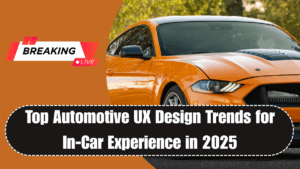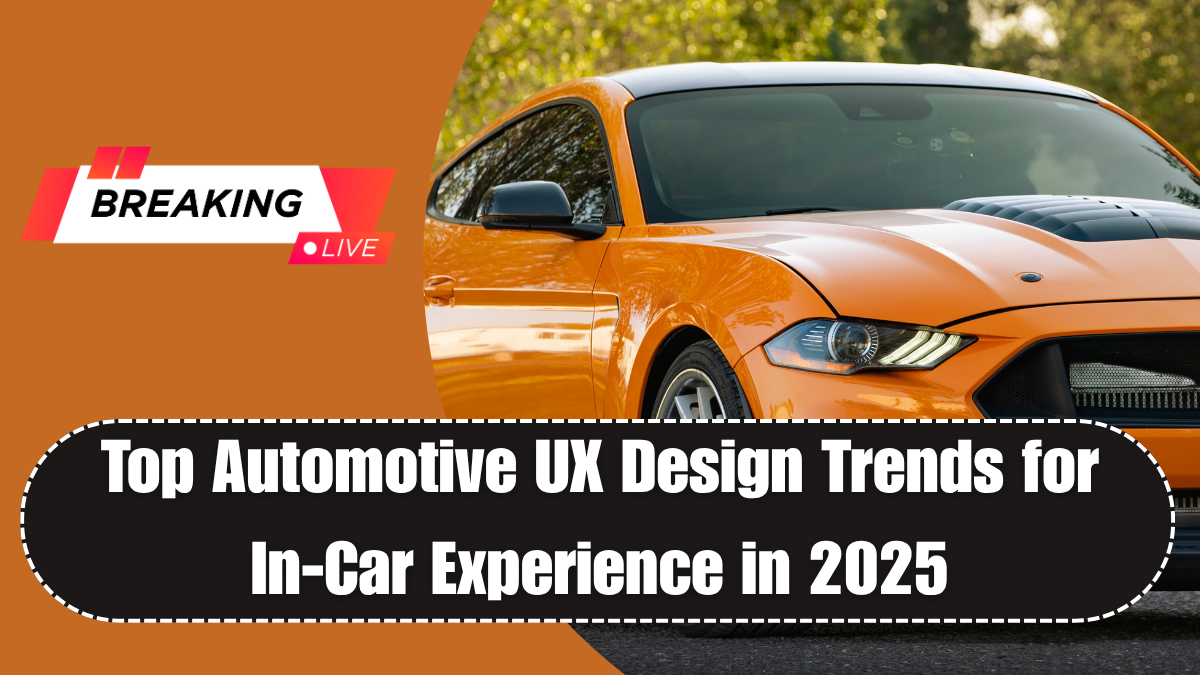The automotive UX design trends 2025 are reshaping how drivers and passengers engage with their vehicles. As cars become smarter and more connected, user experience design has taken center stage. Automakers are now prioritizing automotive UX to make the in-car journey more intuitive, safer, and emotionally engaging.
Across the UK and global markets, dashboards are getting cleaner, screens are becoming smarter, and interfaces are now built around how people naturally interact. Whether it’s adaptive layouts or context-aware displays, these trends ensure that technology complements the driver—not distracts them.

Smarter Dashboards for Safer Driving
One of the core highlights of automotive UX design trends 2025 is the move toward minimalistic dashboards with smart layering. Instead of overwhelming the driver with too much information, dashboards now show only what’s necessary at each moment. This not only reduces distractions but also improves safety.
Key innovations in vehicle dashboard design include:
-
Contextual display panels that change based on driving conditions
-
Haptic feedback controls replacing traditional buttons
-
Integrated climate, music, and navigation in a unified interface
-
Smooth transitions between driving and parked modes
This evolution is not just about aesthetics—it’s about building trust between driver and machine.
Personalized UI with AI and Gesture Controls
Thanks to AI, car interface design is now more personalized than ever. Vehicles learn from drivers’ habits, such as frequently used routes, favorite radio stations, and even climate preferences. This data is used to offer relevant suggestions and make real-time adjustments, creating a personalized driving environment.
Another major addition to the UI trends in 2025 is gesture control. Drivers can now adjust volume, navigate menus, or even accept calls with simple hand motions—without touching a screen. These futuristic features are being widely adopted by both luxury and mass-market brands.
Tools Driving the UX Evolution
Design teams are now using tools like Figma Auto and AR-based simulators to prototype real-world driving experiences. This allows designers to test everything from automotive UX layout to alert placement in an immersive environment before final production.
These tools support:
-
Real-time user testing
-
Simulated driving feedback
-
Collaborative iteration with engineers and designers
Such advancements are enabling rapid innovation while ensuring that new car interface design features meet high safety and usability standards.
Future-Ready Cars Are Already Here
The best part about the automotive UX design trends 2025 is that they’re not futuristic concepts—they’re already in production. Brands are integrating these changes into their 2025 lineups, delivering cars that feel more like digital co-pilots than machines.
From vehicle dashboard redesigns to AI-driven infotainment systems, user experience is now at the heart of automotive evolution. These trends are not just about beauty—they are about function, safety, and emotional connection.
FAQs
What is the main focus of automotive UX design trends 2025?
The focus is on simplifying dashboard layouts, integrating AI, and enhancing user interaction for safer and more personalized driving experiences.
How are AI and gesture controls changing car interface design?
AI helps customize the experience based on driver habits, while gesture controls allow touchless interaction, making driving safer and more intuitive.
What tools are used to prototype automotive UX?
Tools like Figma Auto, AR/VR simulators, and collaborative platforms are used to build and test real-time in-car interfaces before production.
Are these UX design trends already in cars?
Yes, most major automakers have already started incorporating these features in their 2025 car models, especially in dashboard and infotainment systems.
Why is minimalistic design important in automotive UX?
Minimalism reduces driver distraction, enhances focus, and delivers a cleaner, safer, and more calming in-car environment.
Click here to know more.
